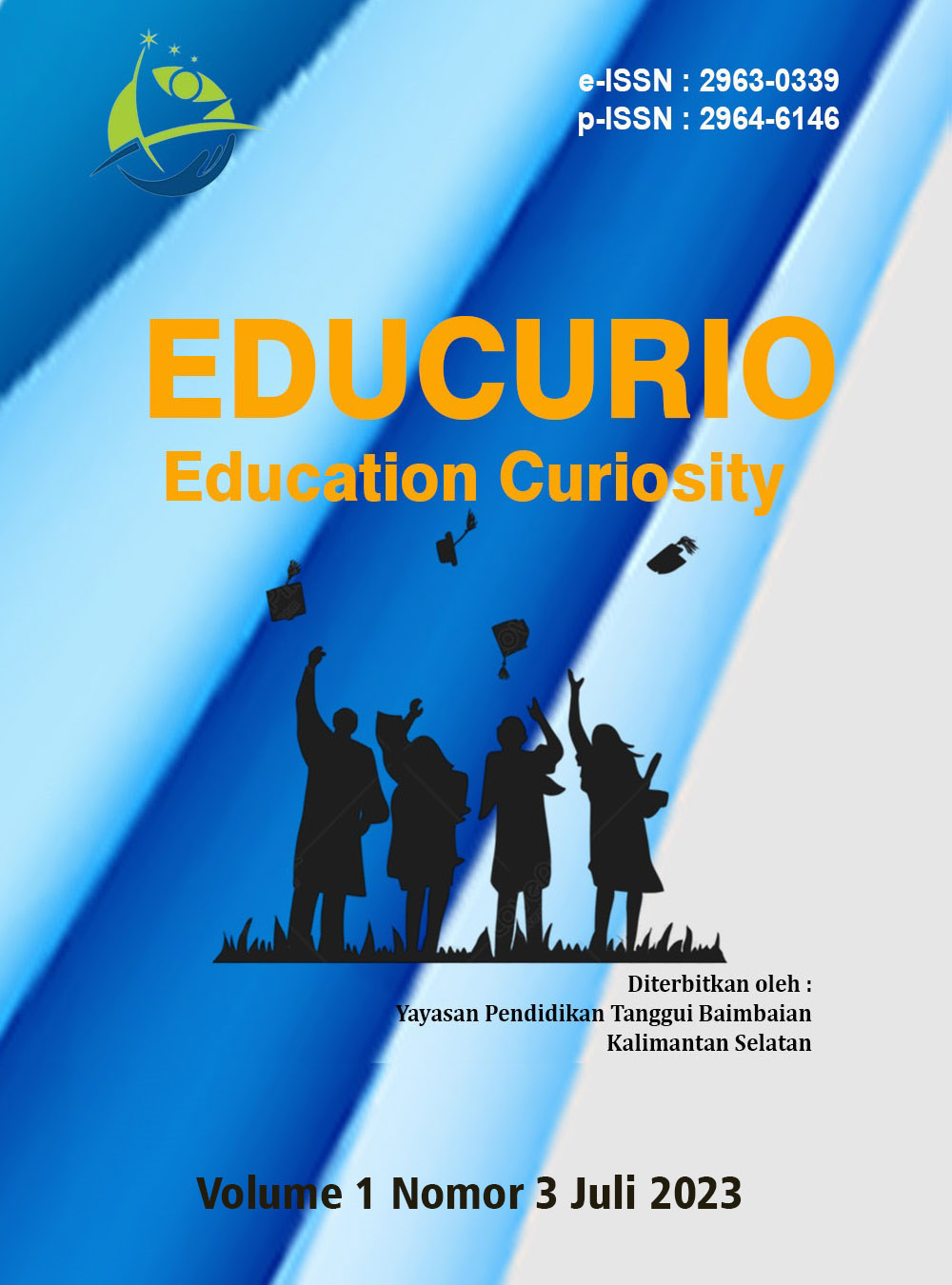Analisis Bicara Guru Dan Bicara Pembelajar Dalam Interaksi Kelas SMA Negeri 1 Pakel
Keywords:
Interaksi kelas, Classroom Interaction Strategies, Teaching EnglishAbstract
Novaldi Nur Leo Yahya. 2023. Judul penelitian ini adalah “Analisis pembicaraan guru dan pembicaraan siswa dalam interaksi kelas. Skripsi Jurusan Pendidikan Bahasa Inggris Fakultas Keguruan dan Ilmu Pendidikan Universitas Bhineka Tulungagung Pembimbing Ibu Yulia Nugrahini, M.Pd. Rancangan penelitian ini adalah metode kualitatif, sumber data dari metode ini adalah seorang guru bahasa Inggris yang mengajar siswa kelas 10 SMA Negri 1 Pakel, Teknik pengumpulan data untuk penelitian ini adalah dengan melakukan observasi kelas dan memberikan angket. Tujuan dari penelitian ini adalah 1 untuk mengetahui jenis-jenis pembicaraan guru yang terjadi di kelas, Hasil penelitian menunjukkan bahwa terjadi interaksi antara guru dan peserta didik yang benar-benar interaktif, guru menggunakan tuturan untuk menyampaikan materi kepada siswa dan siswa memberikan umpan balik kepada guru.
References
Allwright, D & Bailey. (1991) “ Focus on The Language Classroom: An Introductiont to Classroom Research for Language Teacher”. New york. Cambridge University Press (hal.19)
Brown, H. D. (2007). Teaching by Principle: An Interactive Approach to Language Pedagogy. Second Edition. New York: Addison Wesley Longman, Inc. (hal.1)
Brown, H.D. (2007). Teaching by Principle- An Interactive Approach to Language Pedagogy (3rd edition). London. Longman, Pearson Education Ltd. (hal.1)
Brown, H.D. (2000). “Principle of Language and Teaching”. New York. Longman (hal.8)
Ellis, R. (2008). The Study of the Second language acquisition. London : Oxford University Press. (hal.2)
Flandres, N.A (1989). “Teacher Influence, Pupil attitudes and achievement”. US. Minneapolis: University of Minnesota (hal.18)
Gay L.R. 2012 “Research Education” United States of America.Pearson Education. (hal.26,27,28)
Gharbavi A &Ravani,H. (2014). “Is Teacher Talk Pernicious To Students? A Discourse Analysis Of Teacher Talk“. (hal.6)
Harmer, Jeremy. 2012. The Practice Of English Language Teaching. PearsonLongman ELT. (hal.15,16)
Kranshen. (2014). Theory of Second Language Acquisition Researcher and Professor. Posted 15 th February by diane. (hal.12)
Mercer, N. & Dawes, L. (2008). The value of exploratory talk. In N, Mercer, & S. Hodgkinson (Eds), Exploring Talk in School. London : Sage (hal.46)
Murtiningrum, S. (2009). Classroom Interaction in English Teaching. Unpublished Thesis. Yogyakartas. Sanata Dharma university. (hal.42)
Nunan, D. (2002). Language Teaching Methodology: A Text book for teacher. Englewood Cliffs, NJ: Prentice Hall Inc. (hal.2)
Nunan, D. “Bringing about change in language education”.Hongkong. The University of Hongkong (hal.1)
Nunung, S. (2015). “Classroom Interaction Strategies Employed by English Teacher at Lower Secondary Schools. Malang. University Negeri Malang. Vol. 26. No. 2. (hal.7)
Nurhasanah. (2013) “The Analysis of Teacher Talk and Learner Talk in the Classroom Interaction”. (hal.7,47)
Pinter, A. (2006). Teaching Young Language Learner. Oxford : Oxford University Press.
Pratama, D.W. (2015). Teacher And Learners’ Talk in the Classroom Interaction At Tenth Grade of Sma Jawahirul Hikmah Tulungagung in Academi Year 2014/2015. States Islamia Institude (IAIN) of Tulungagung.
Setiawati, L. (2012). “A Descriptive Study On The Teacher Talk At EYL Classroom”. Indonesian Journal of Applied Linguistics, Vol 1 No.21 (hal.6)
Richard, J.C. & Nunan, D (1990). “Second Language Learning”. New York : Cambridge University Press. (hal.11)
Wray David. “Classroom Interaction In Social Learning, from theory to practice”. London. Taylor and Francis e-library (hal.1)
Wang & Lin. (2008). The Teacher‟s Capability to promote students‟ participation is what will make or break mobile. (hal.10)
Xiauo, Y. (2006). School of Foreign Languages and Literature. Chongqing Normal University. University & Yangtze Normal University. (hal.10)
Downloads
Published
How to Cite
Issue
Section
License
Copyright (c) 2023 Novaldi Nur Leo Yahya

This work is licensed under a Creative Commons Attribution 4.0 International License.
License and Copyright Agreement
- Authors retain copyright and other proprietary rights related to the article.
- Authors retain the right and are permitted to use the substance of the article in their own future works, including lectures and books.
- Authors grant the journal the right of first publication with the work simultaneously licensed under Creative Commons Attribution License (CC BY 4.0) that allows others to share the work with an acknowledgment of the work's authorship and initial publication in this journal.
- Authors are able to enter into separate, additional contractual arrangements for the non-exclusive distribution of the journal's published version of the work (e.g., post it to an institutional repository or publish it in a book), with an acknowledgment of its initial publication in this journal.
- Authors are permitted and encouraged to post or self-archive their work online (e.g., in institutional repositories or on their website) prior to and during the submission process, as it can lead to productive exchanges, as well as earlier and greater citation of published work.












